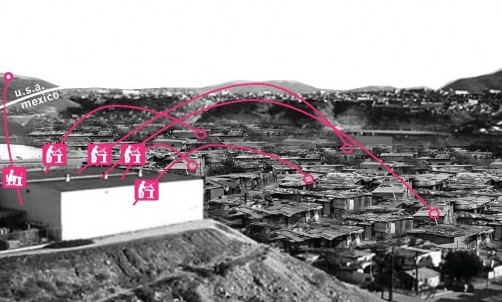InfraNet Lab is “a research collective probing the spatial byproducts of contemporary resource logistics.” Given its emphasis on spatial aspects, it includes many topics of interest to geographers.
InfraNet Lab was included on Planetizen’s 2009 list of the 10 best planning, design, and development websites. Planetizen describes InfraNet Lab as:
“An intense and directed blog focusing on the physical manifestations of controlling resources. It’s a fresh look at the impacts of modern world’s infrastructural needs and the intertwined networks between urbanism, architecture and landscape that result. With archives dating back to April 2008, InfraNet Lab offers a crash course in innovative ideas that reframe the infrastructure conversation around the impacts of human resource dependence and, ultimately, methods for making improvements. An insightful and inciting read for anyone feeling underwhelmed by the status quo of modern-day infrastructure.”
One post on InfraNet Lab of particular interest to us is the guest post by Juan Robles, following an InfraNet Lab seminar at Daniels Faculty of Architecture, Landscape, and Design at the University of Toronto. Robles writes about the landscapes resulting from the growth of maquiladoras in Mexico. He looks at how the necessary infrastructures and networks for maquiladoras to succeed have developed, and how they have transformed the Mexico-US border area. The changes have certainly been profound:
“The ongoing processes of trade and communication that now integrate the 21st century regional economies have created numerous territories of abundance. Among these spaces the maquiladora landscape, in the northern border of Mexico, has seen the greatest change in the last 50 years.”
This is a well illustrated account of the spatial changes associated with maquiladoras, and includes a variety of useful maps and graphics.
InfraNet Lab is a valuable resource for AP, A-level and IB. In InfraNet Lab’s words:
The globe’s networked ecologies of food, water, energy, and waste have established new infrastructures and forms of urbanism linking dispersed entities. These agglomerations evolve and shift as resources are uncovered or depleted. While these ecologies exist at the service of our contemporary lifestyles, they have typically remained hidden from view and from the public conscience. Yet as resources of food, fuel and water begin to run scarce, new resources are mined and new networks develop.
InfraNet Lab takes the view that “Long accepted patterns of globalization are being called into question as transportation costs soar and resources run scare, transforming mobility and trading patterns. New local, regional and international networks of goods, movement and trade are beginning to emerge.”
This means that InfraNet Lab offers some very valuable resources for courses such as the IB Geography’s Paper 3 for Higher Level students which looks at the impacts of all kinds of international interactions.

Sorry, the comment form is closed at this time.